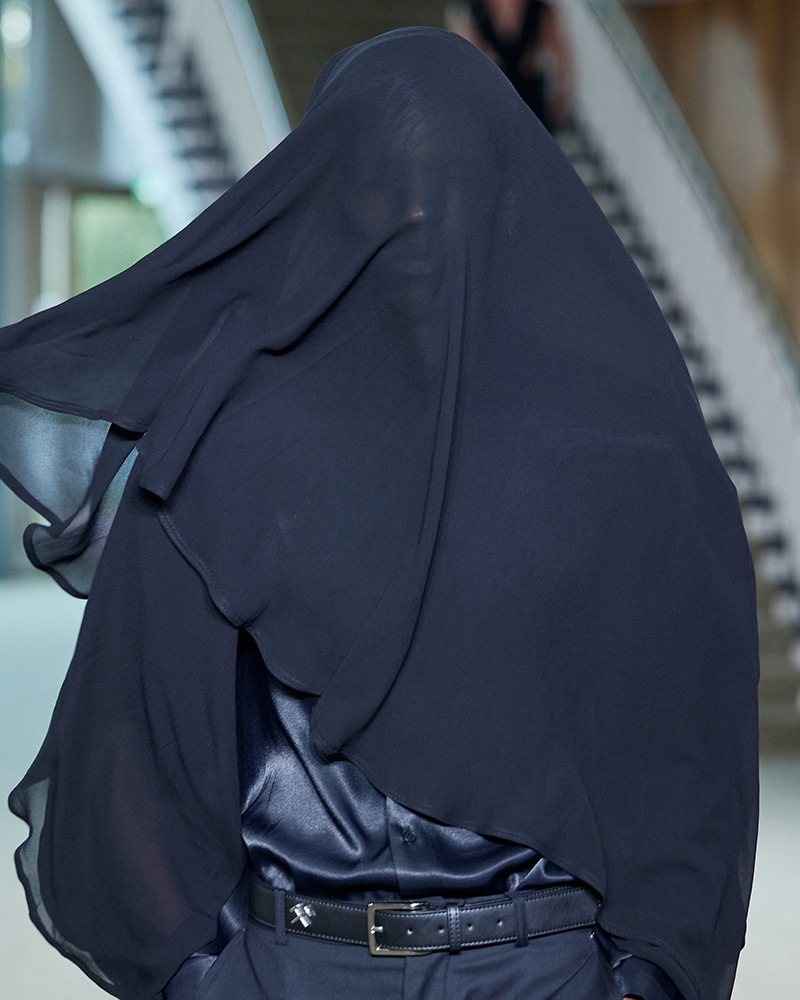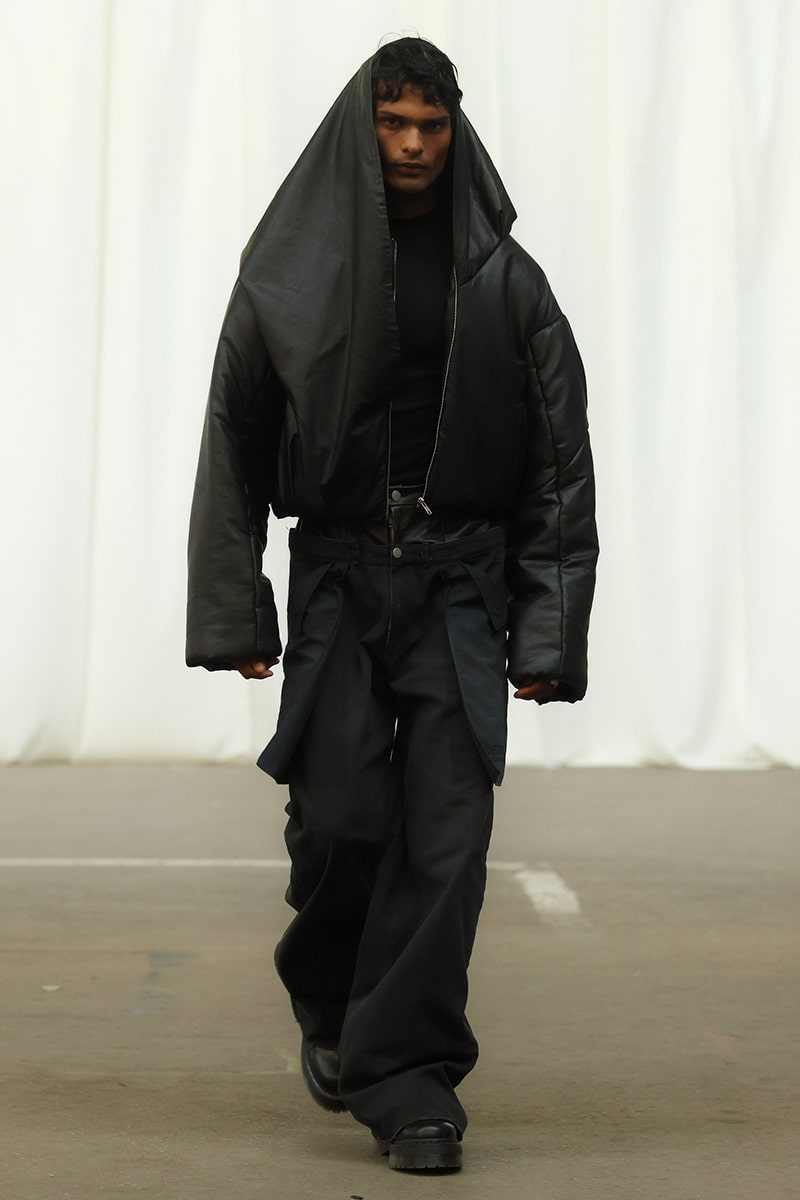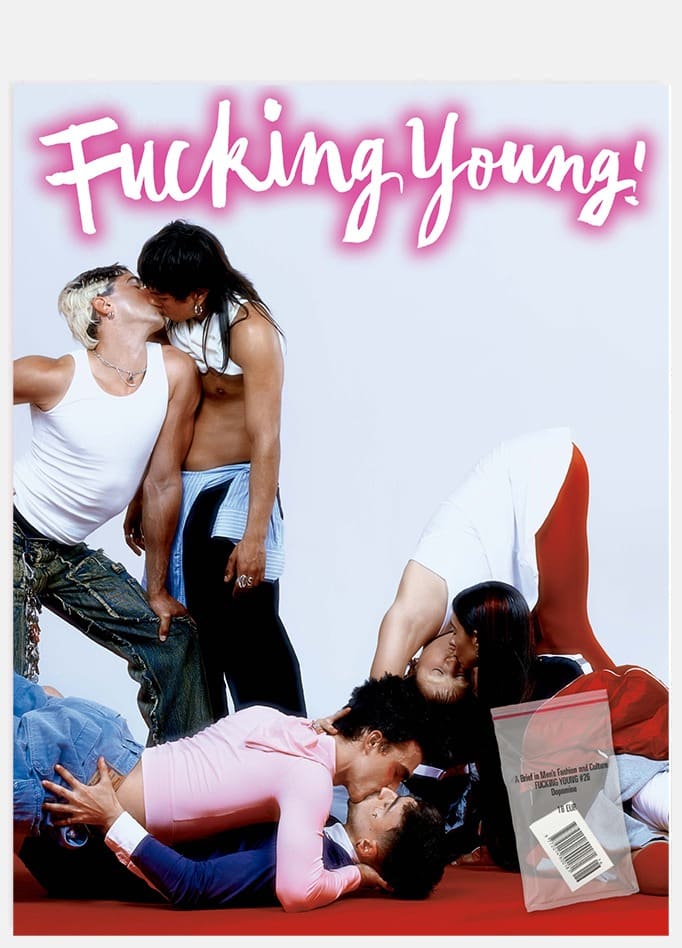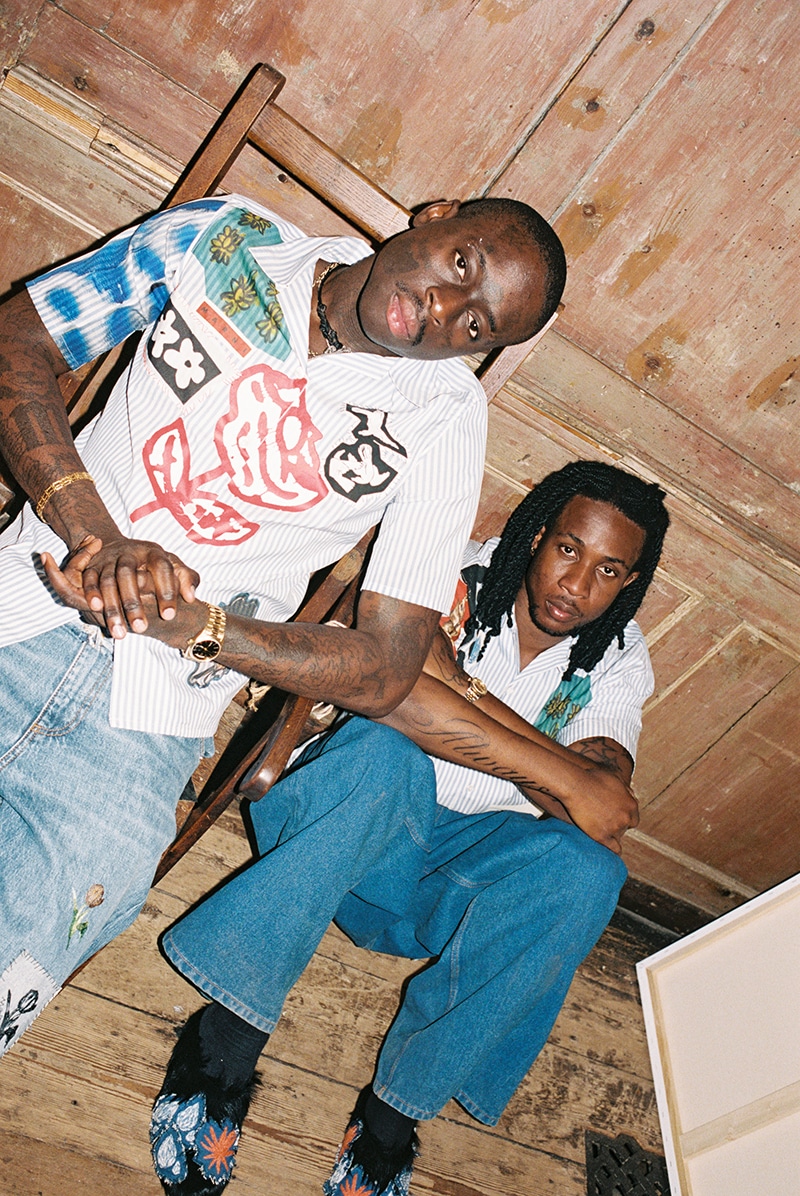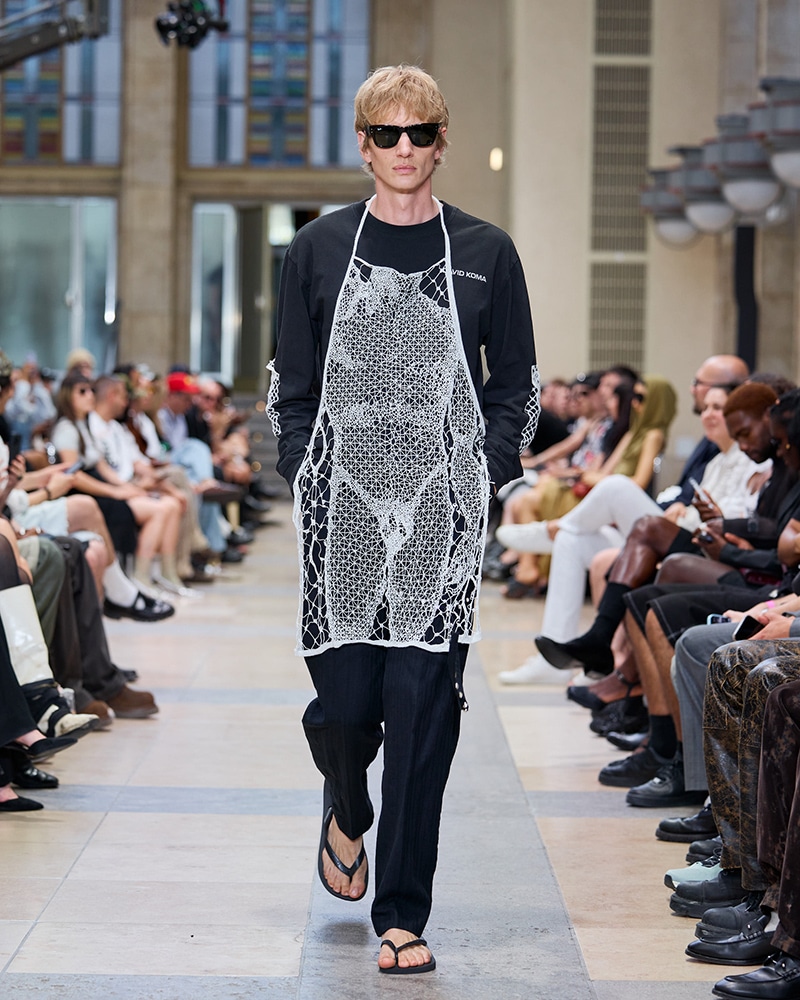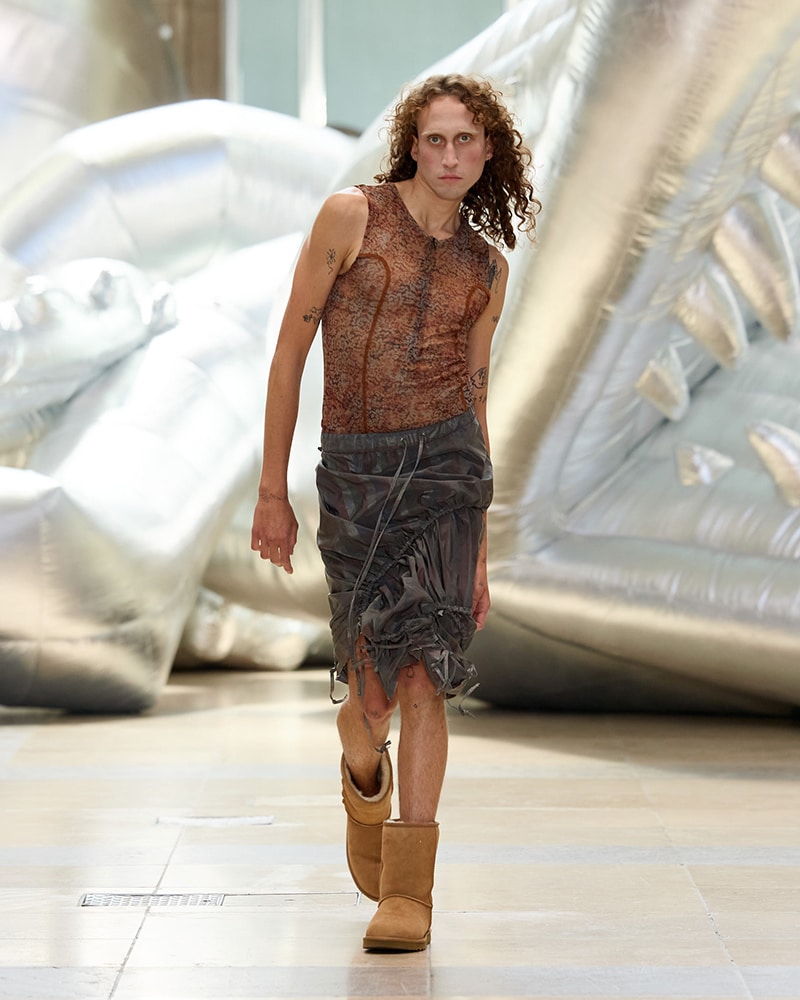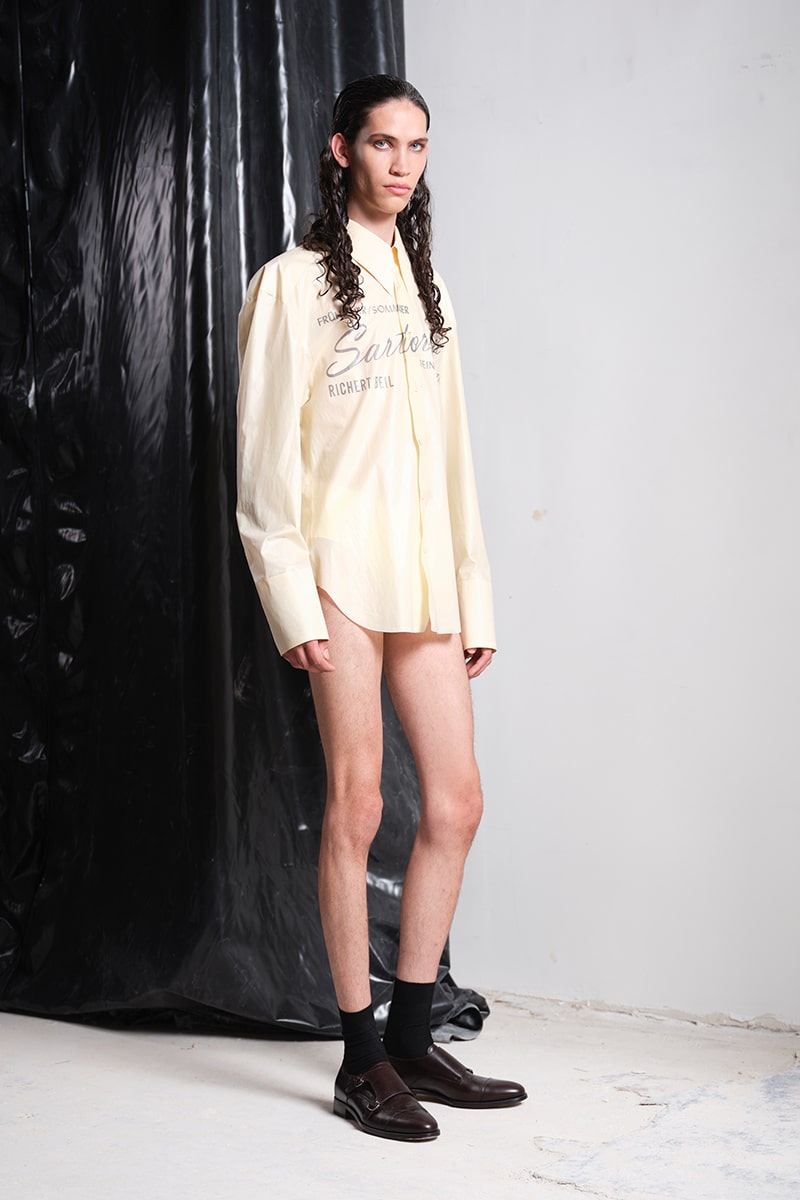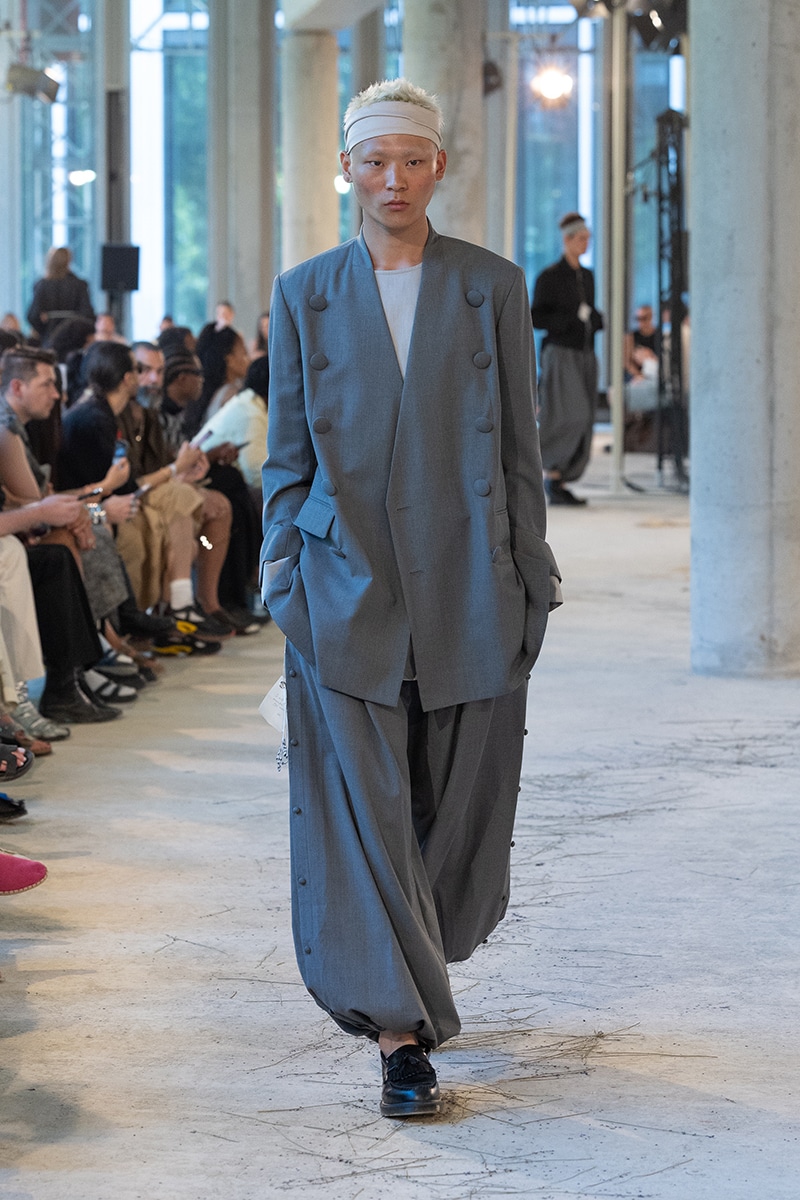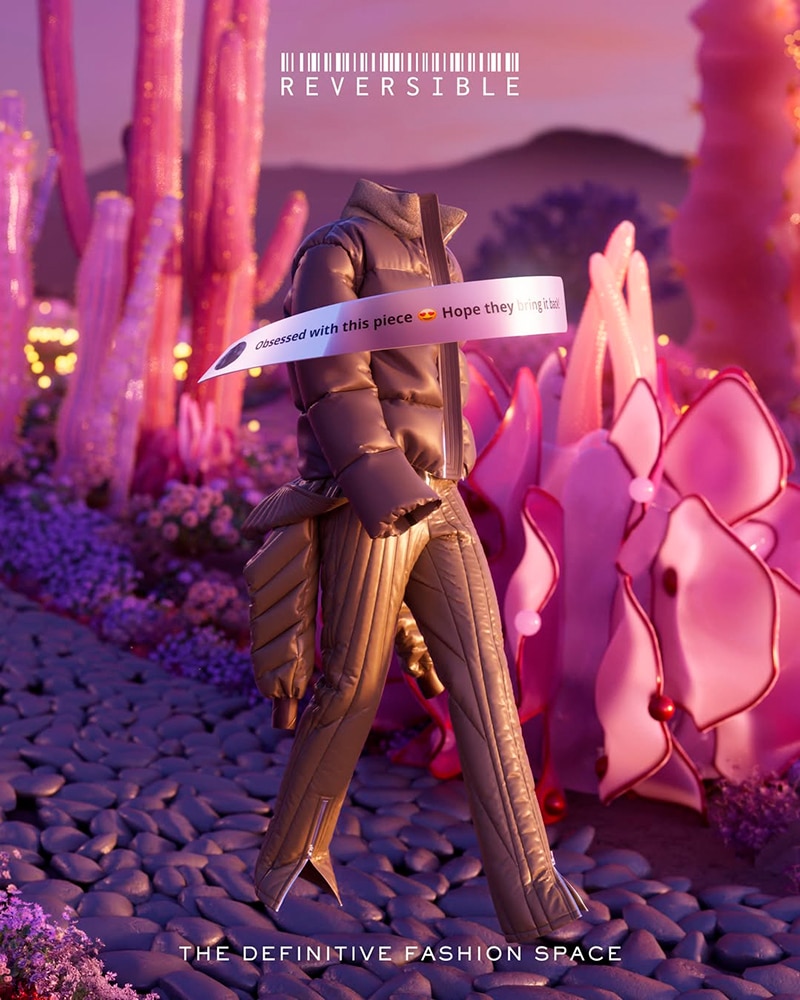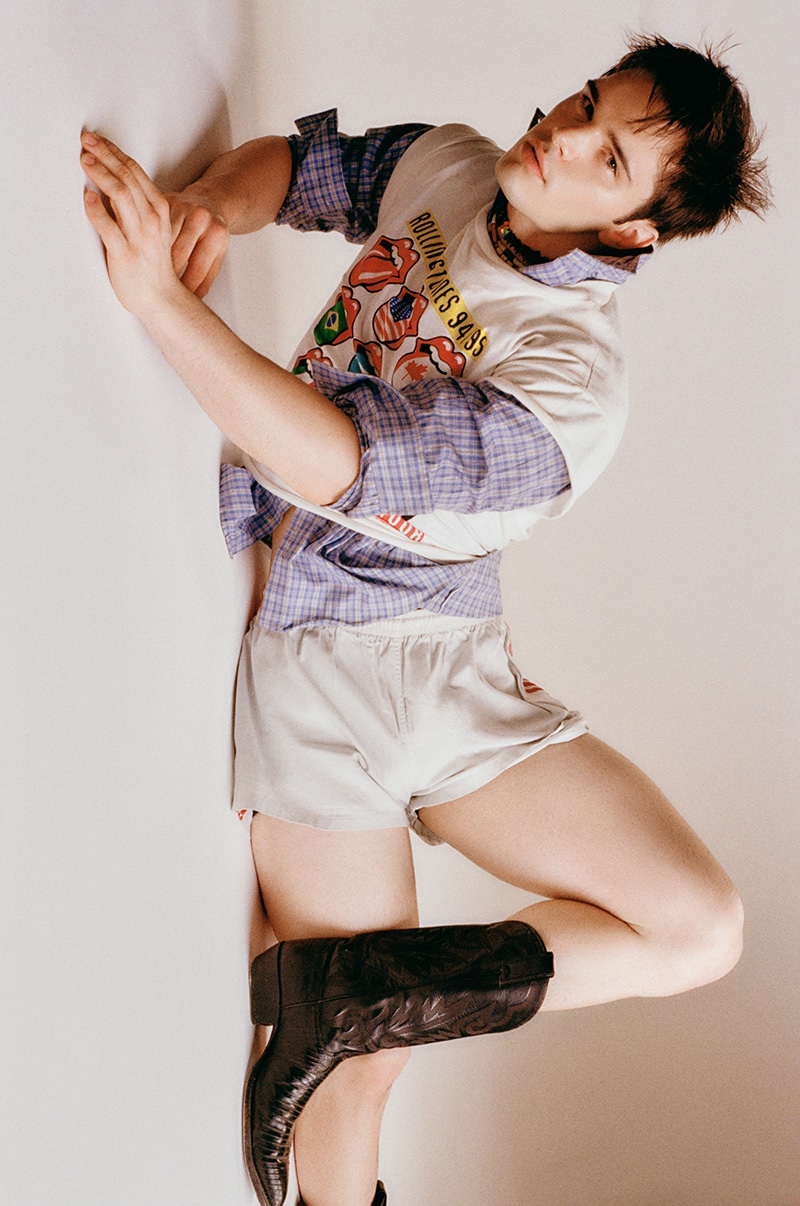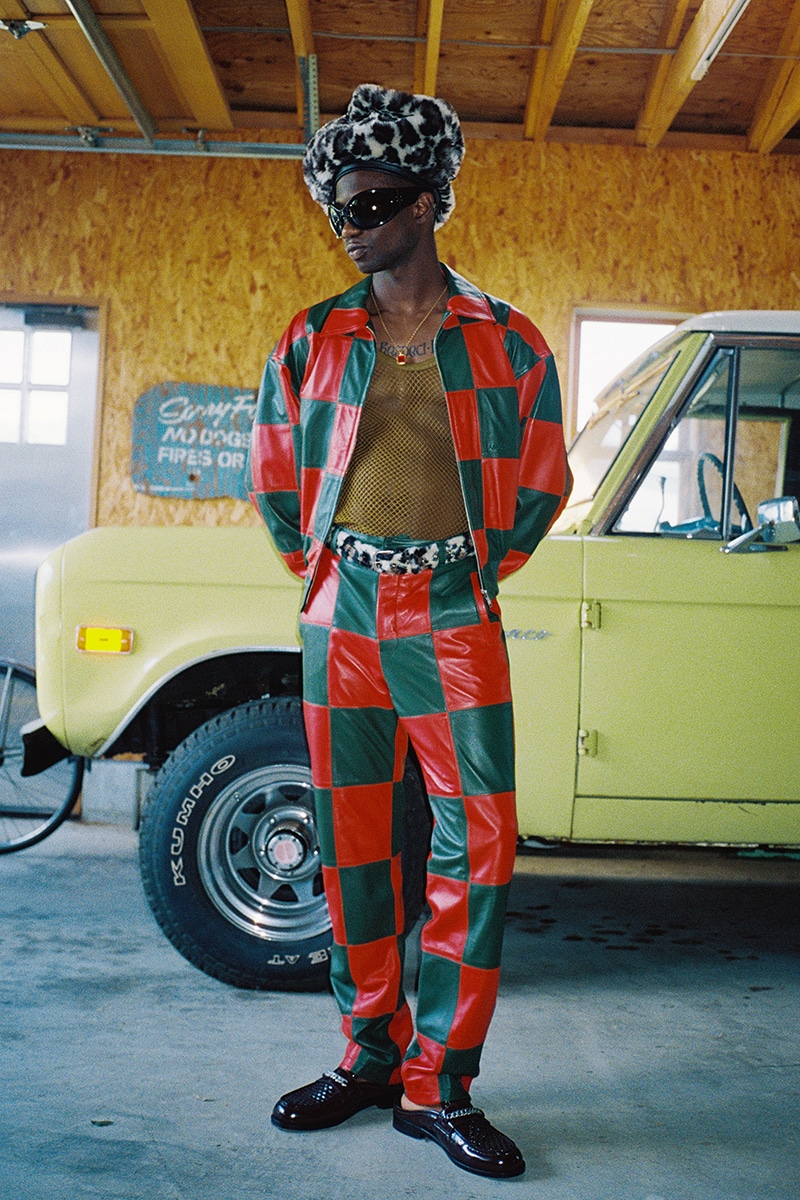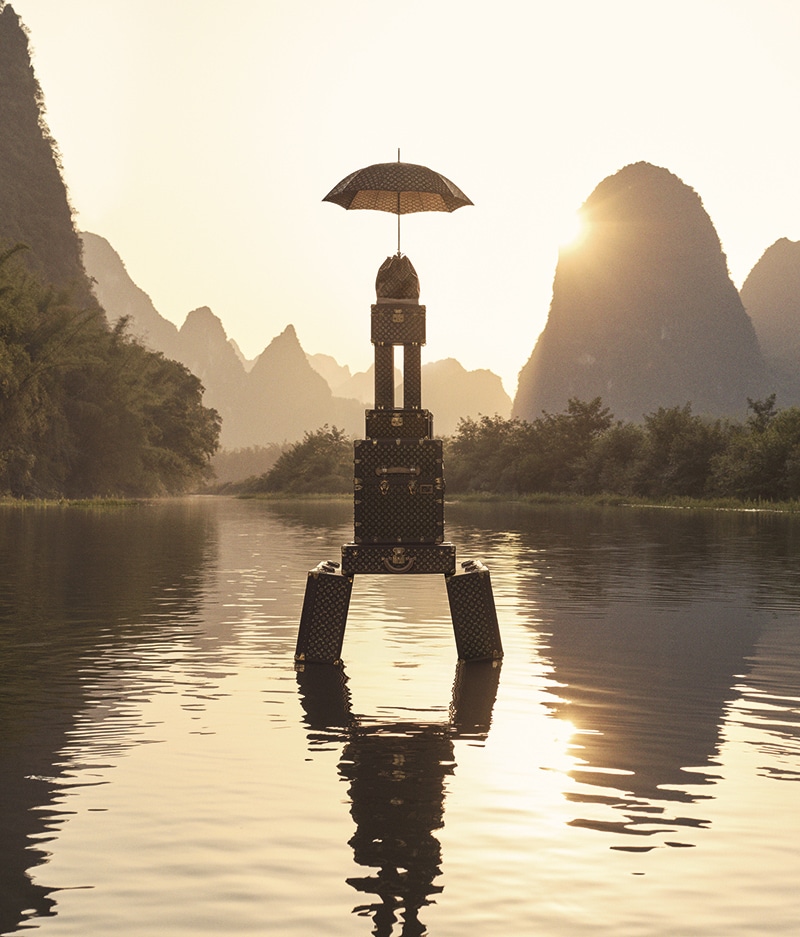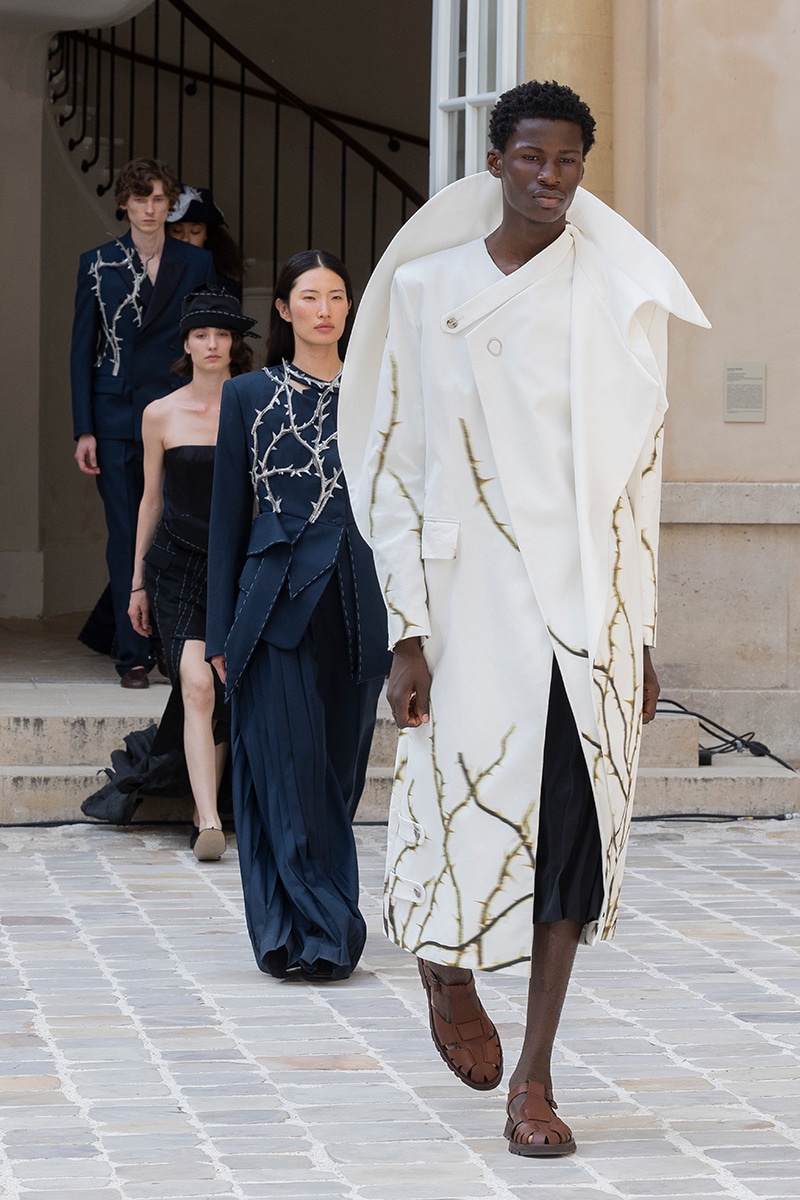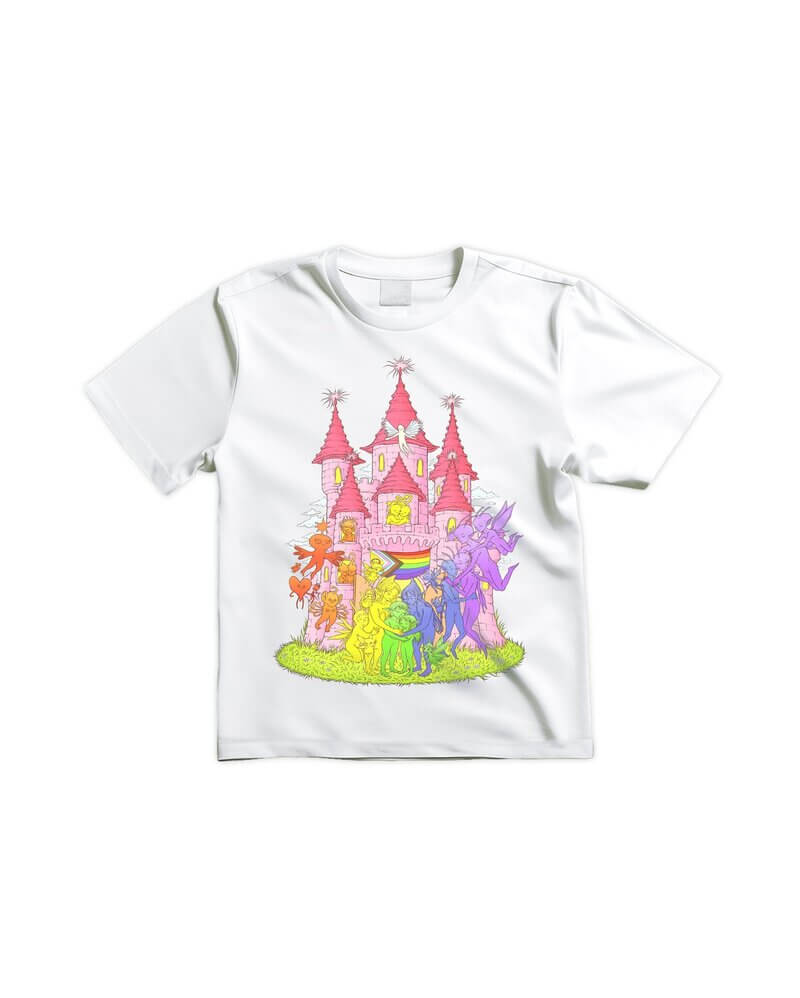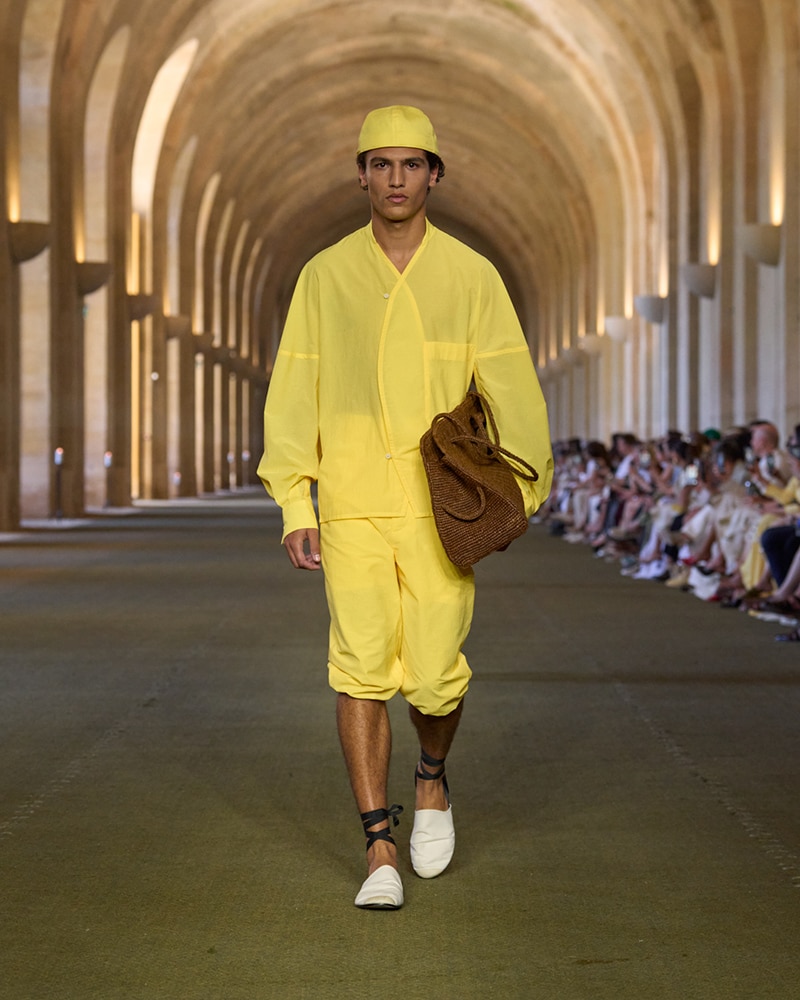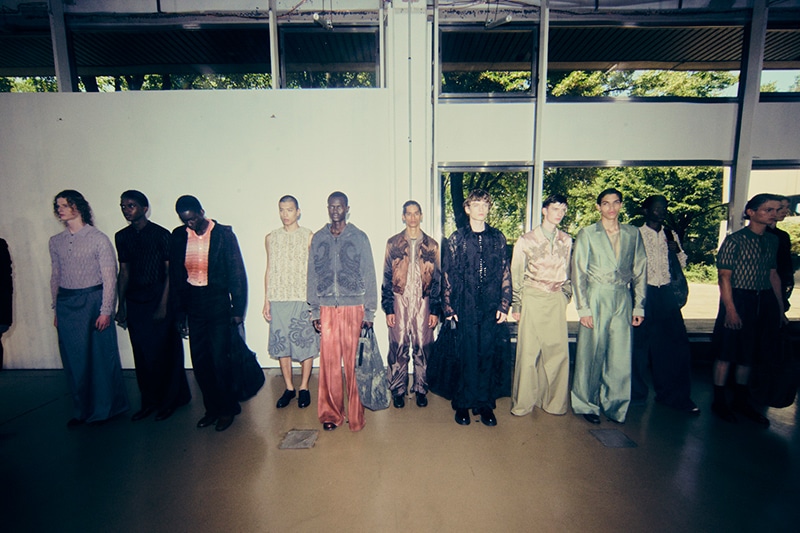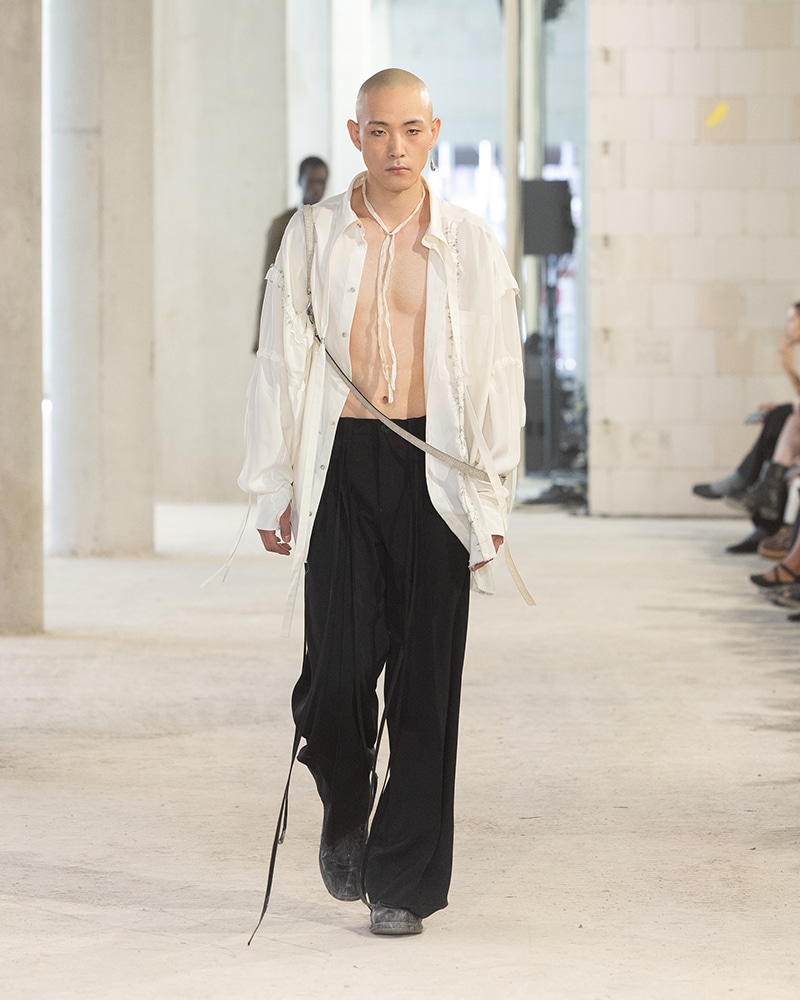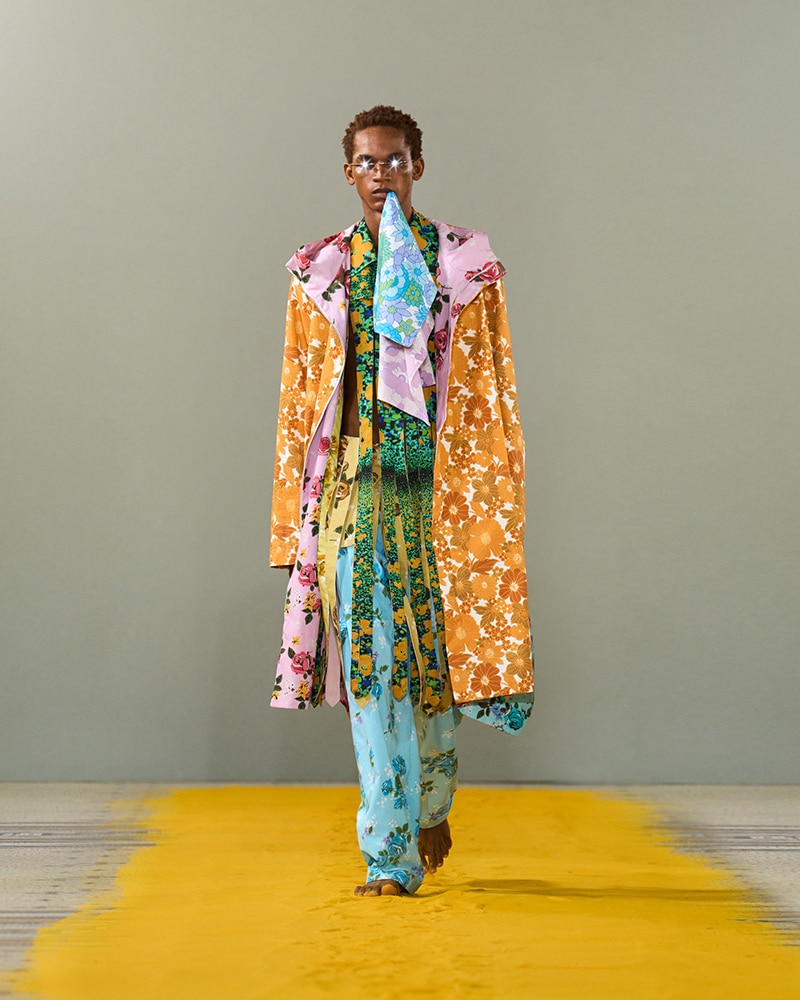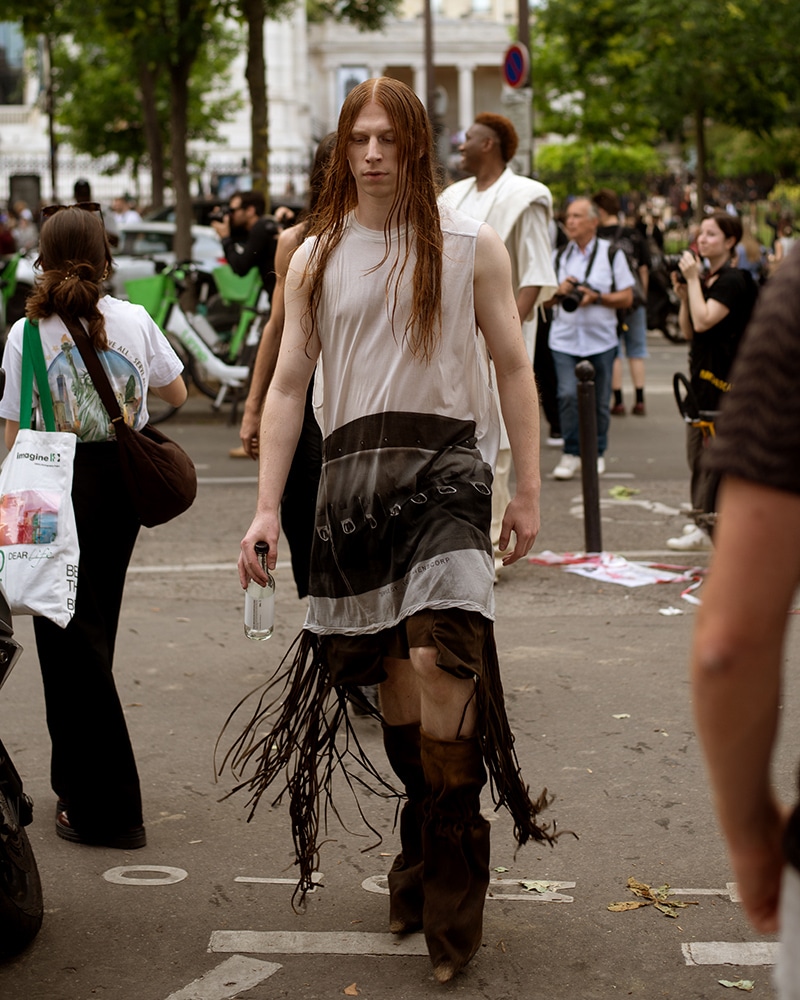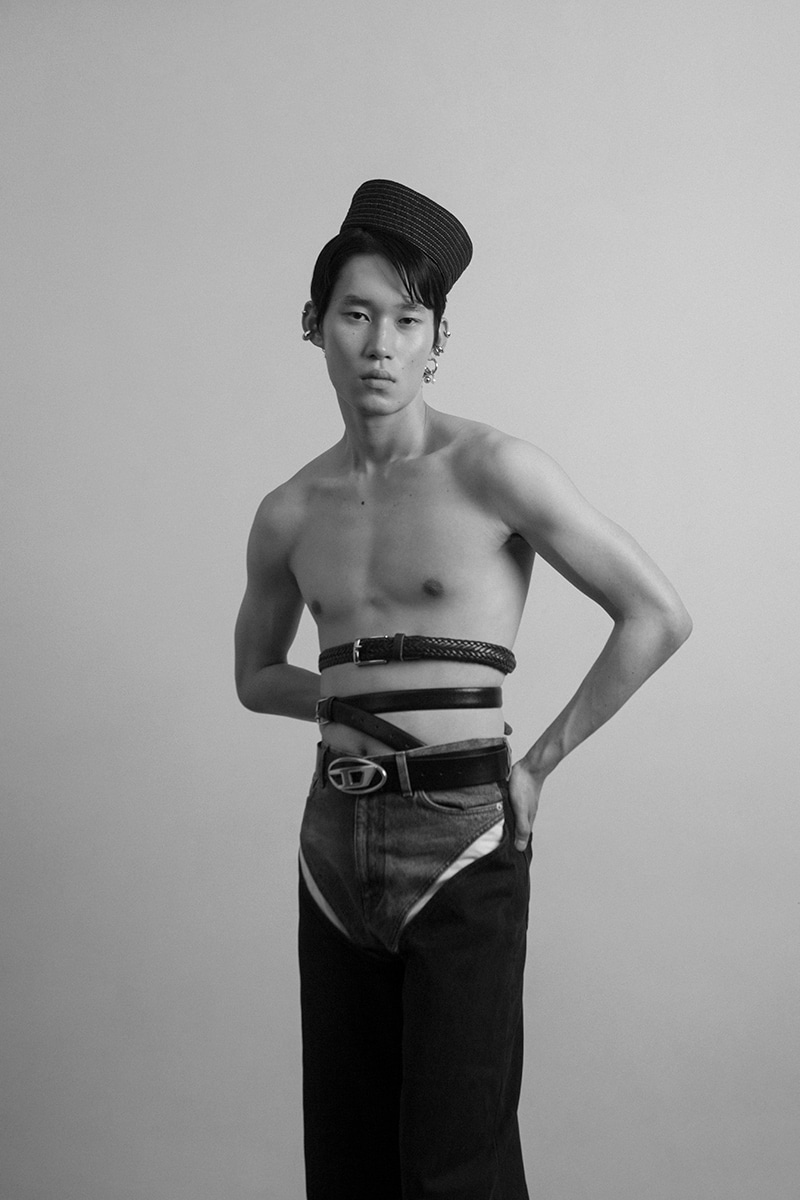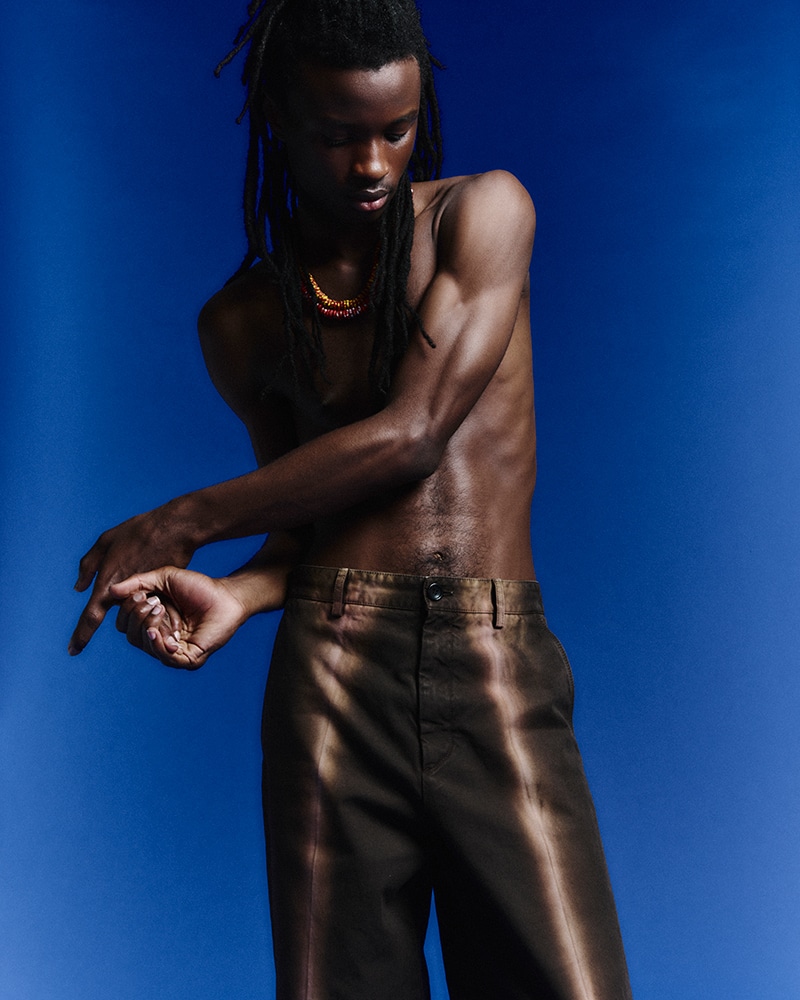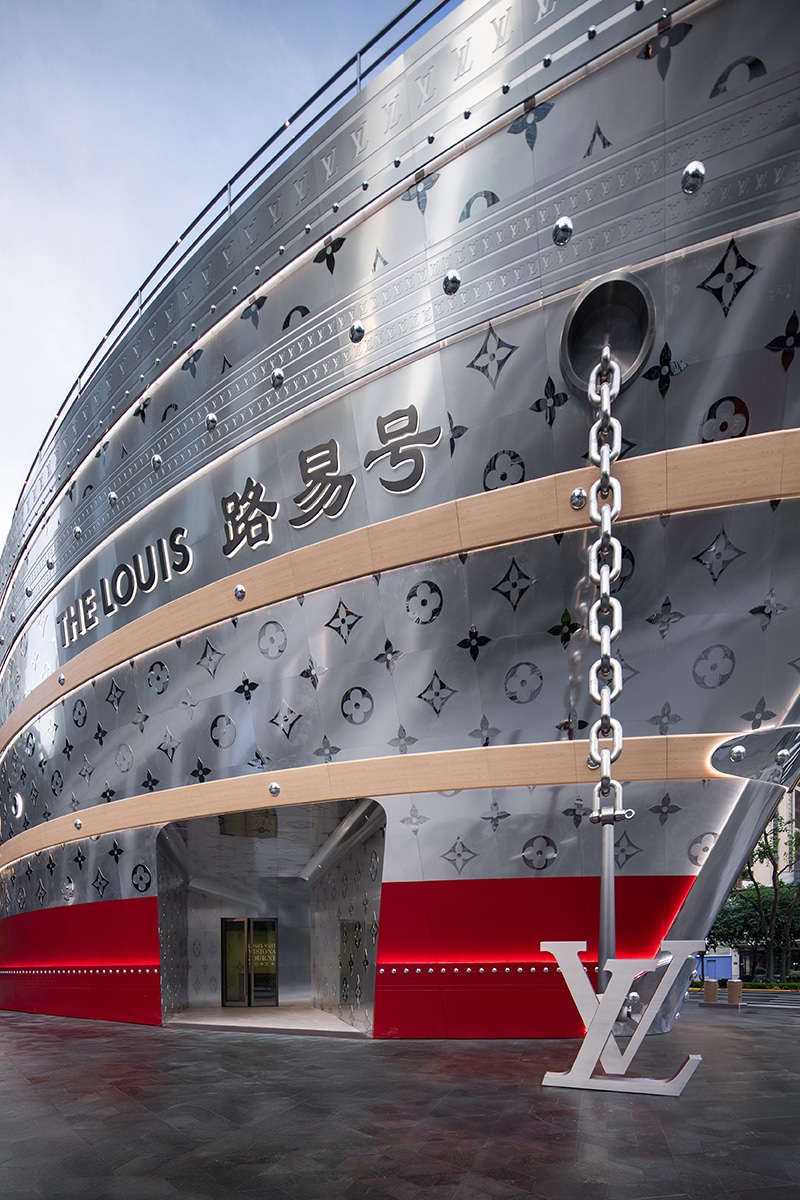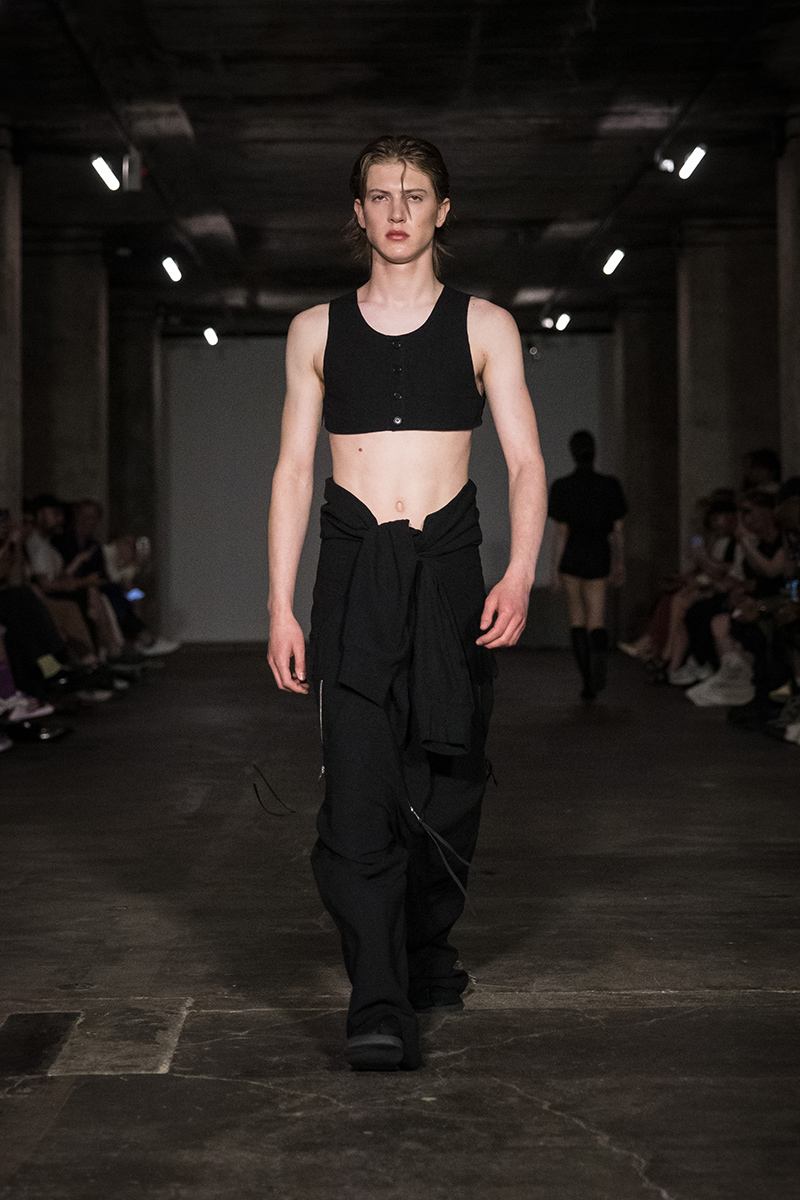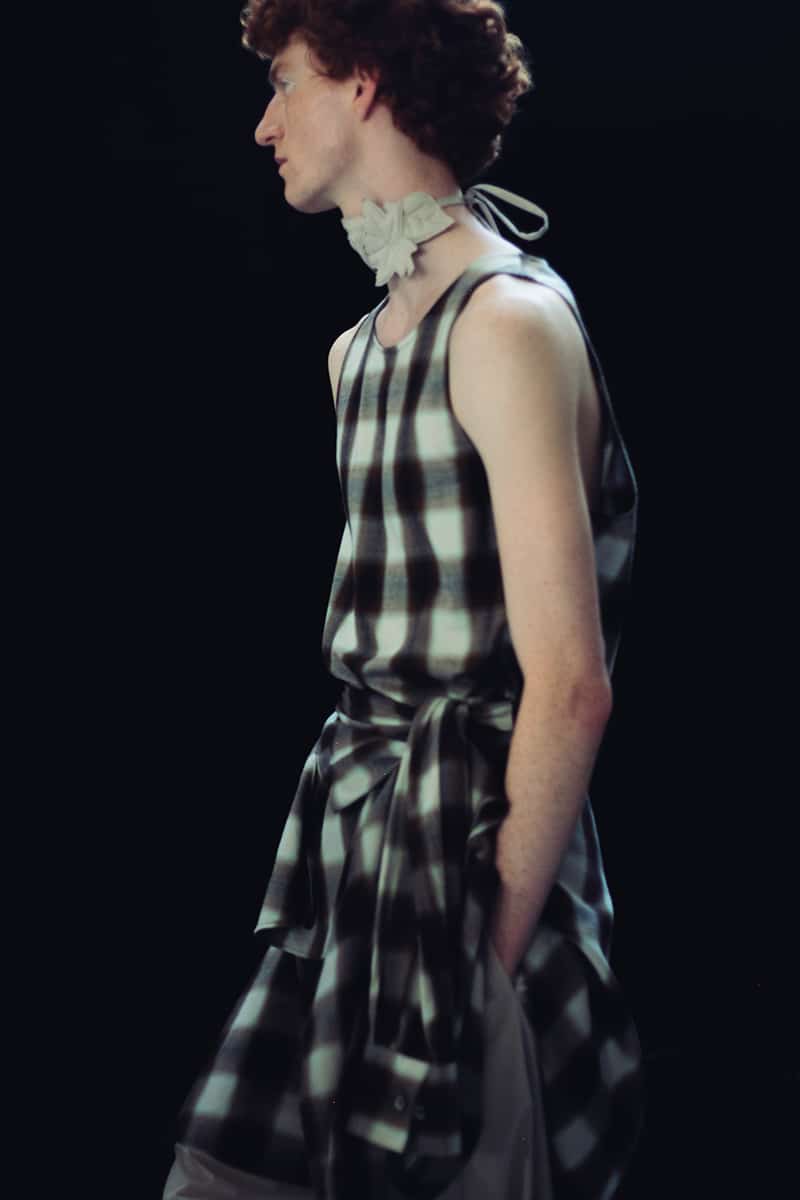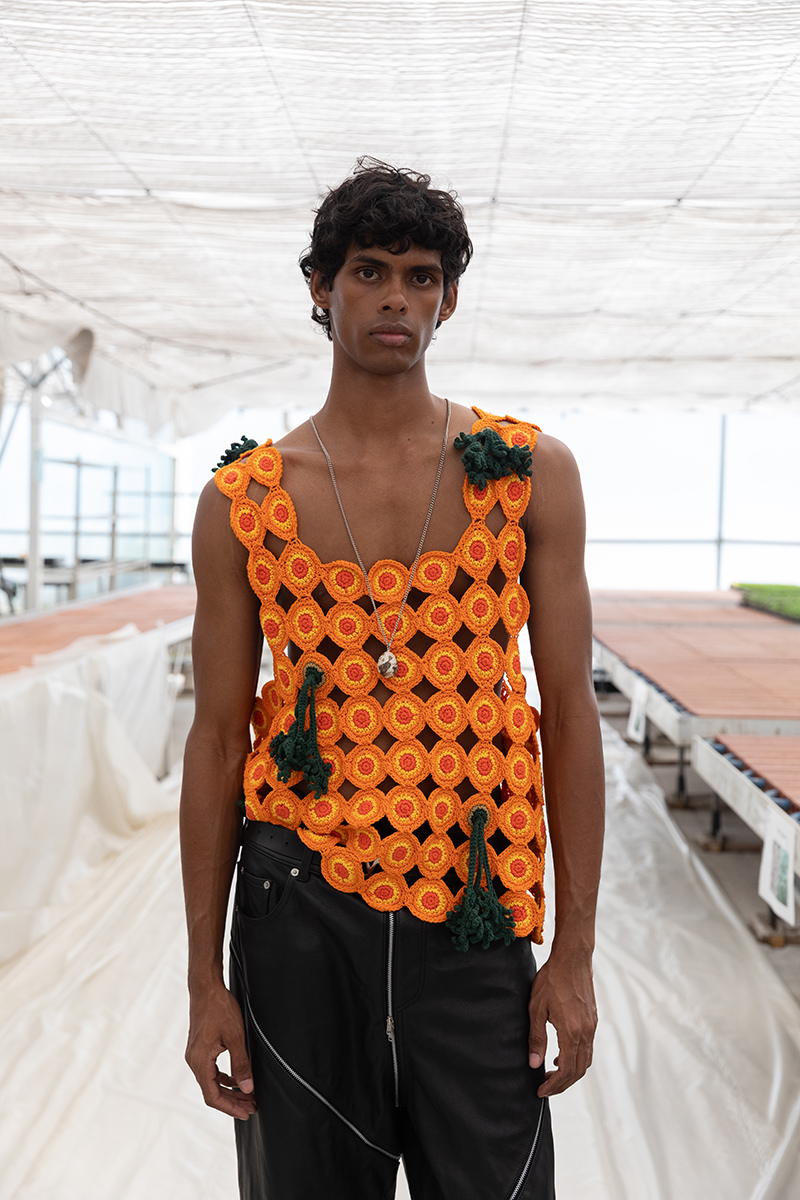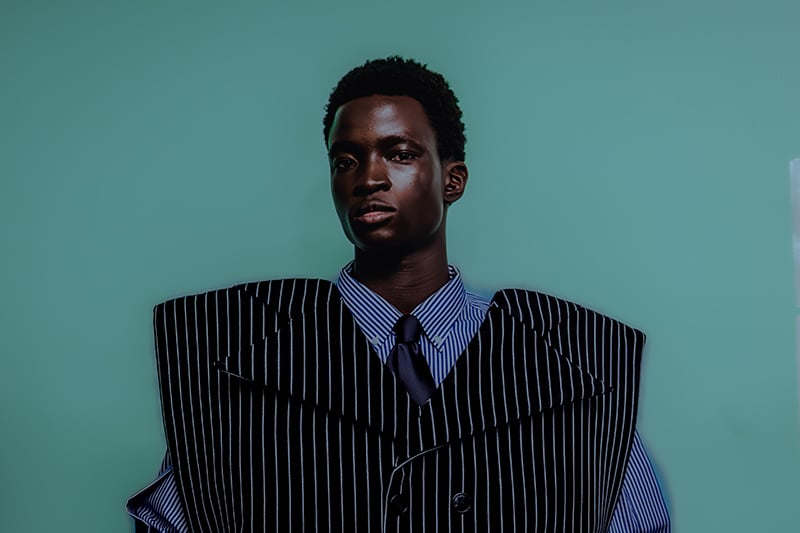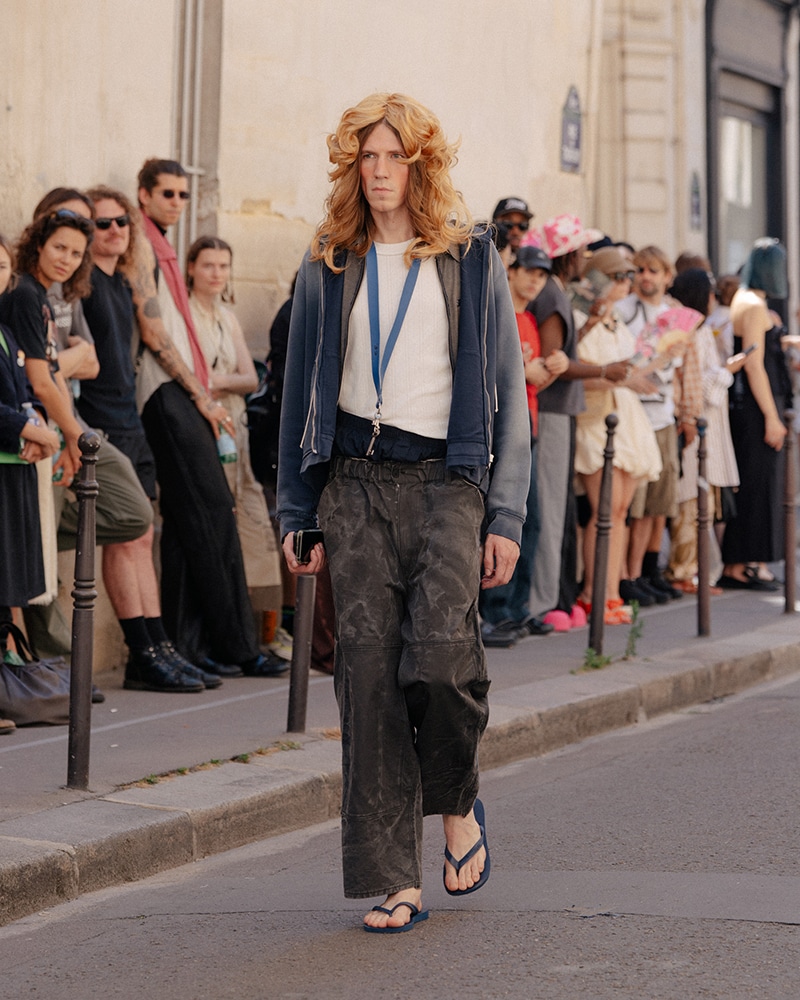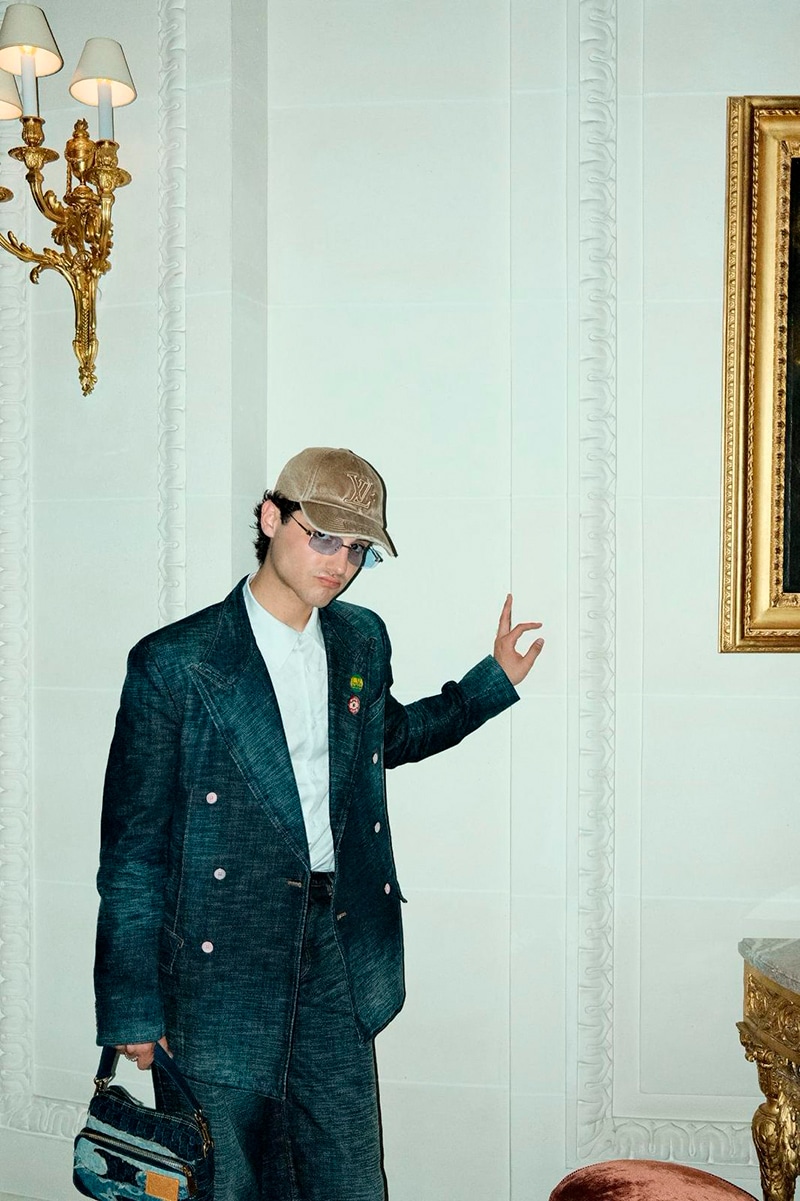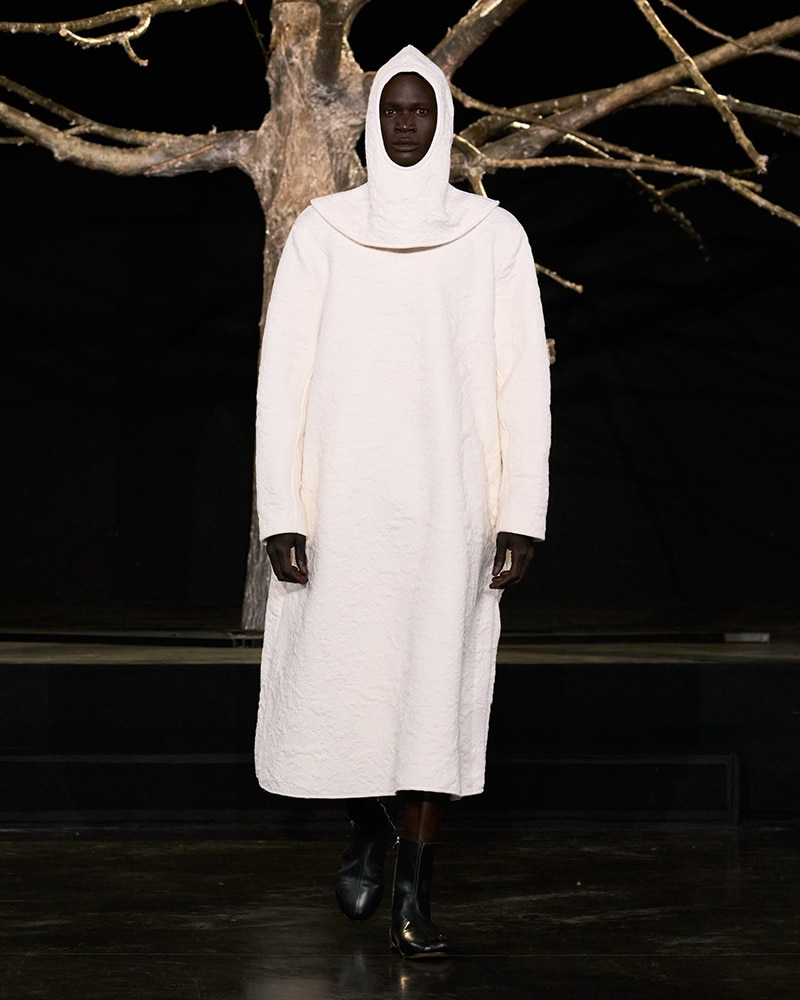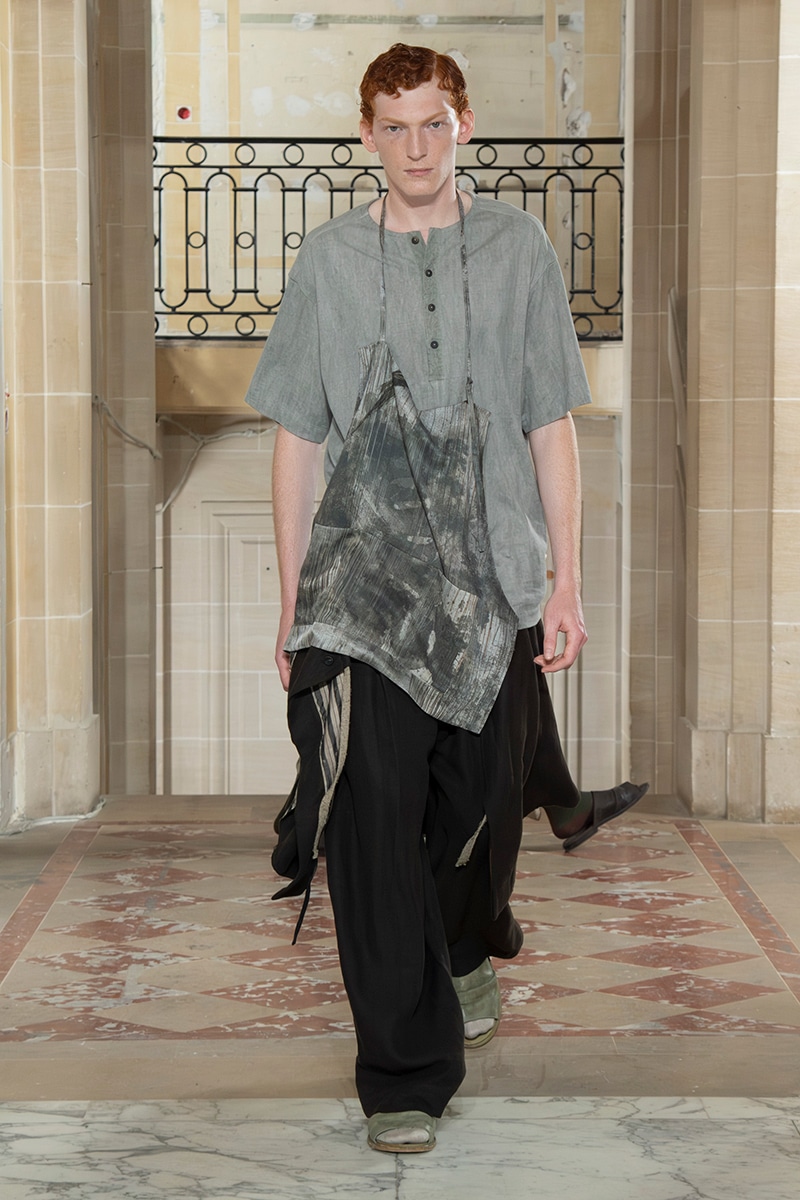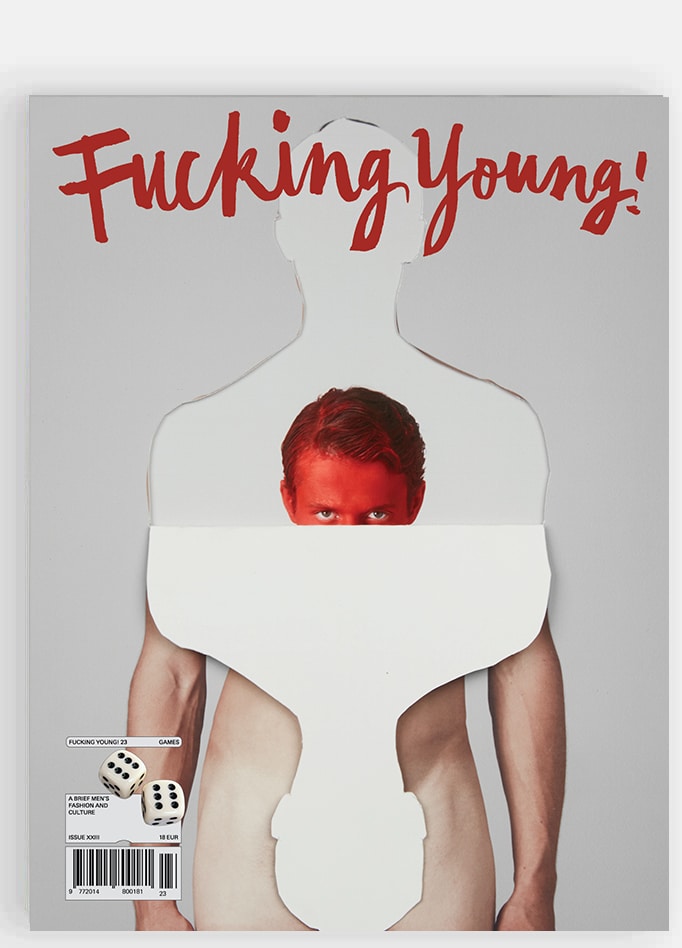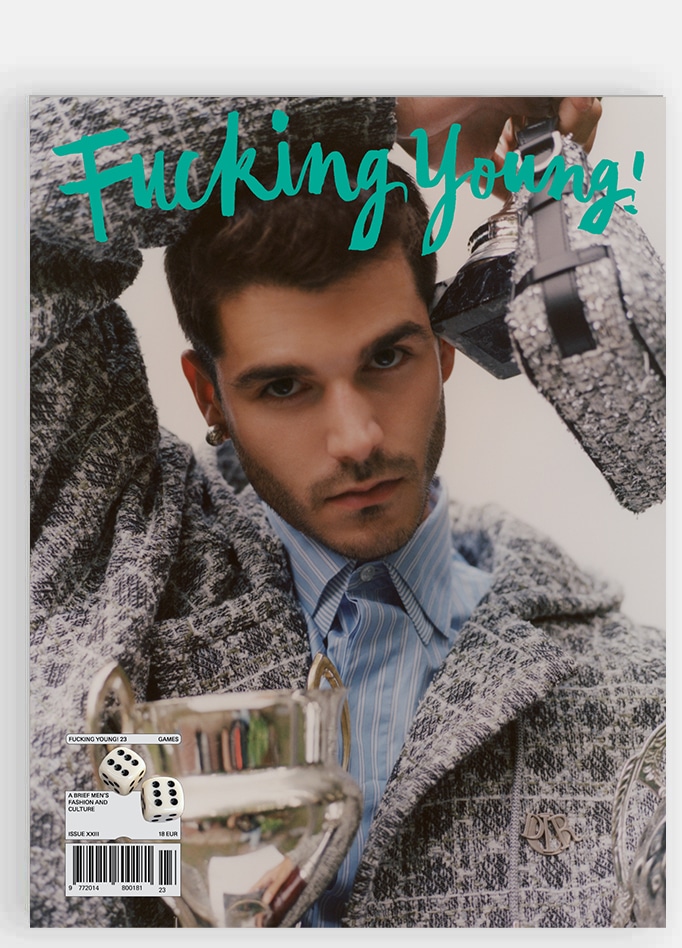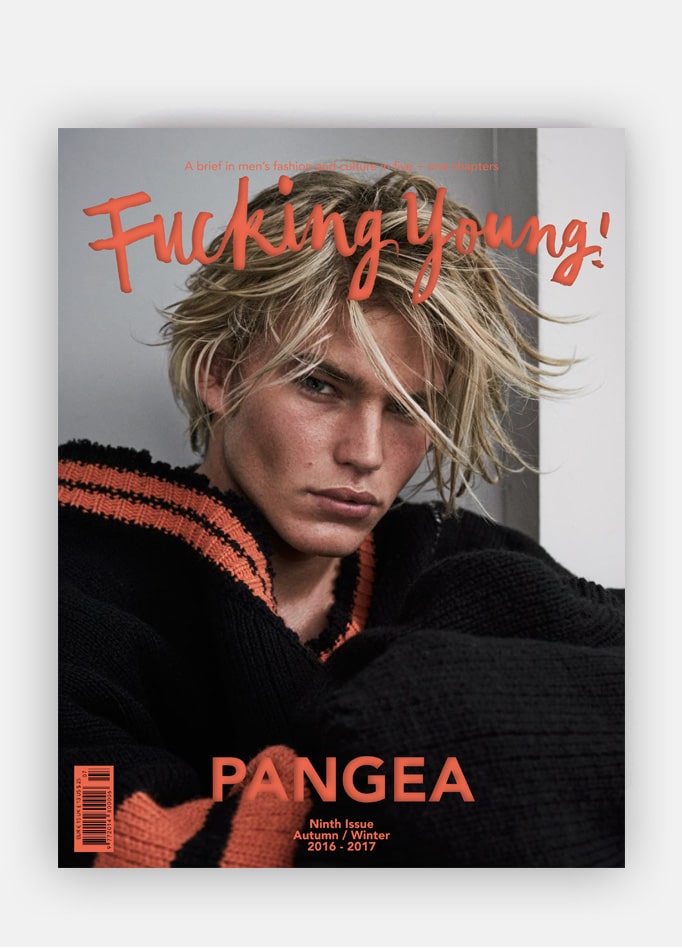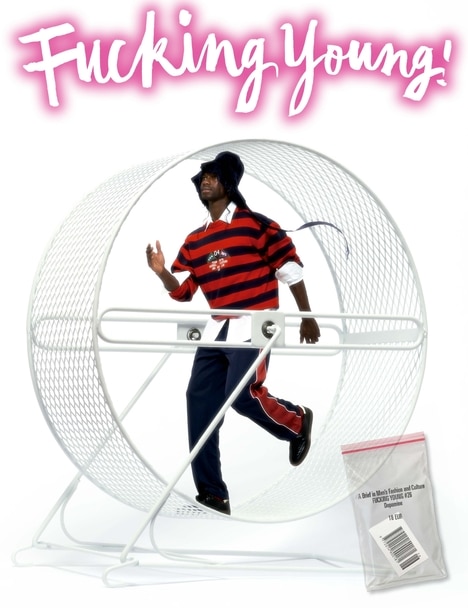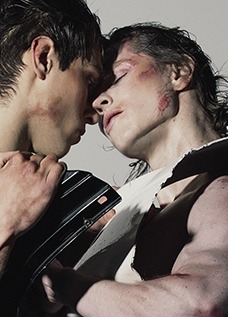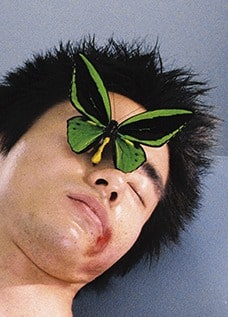Paolo Leduc‘s latest collection, “Sons of Tailoring,” was showcased at 080 Barcelona Fashion.
The designer’s ability to balance seemingly contrasting styles is evident in every piece. Leduc achieves this harmony through a meticulous process of deconstruction and reconstruction. By carefully dissecting classic tailoring shapes and combining them with streetwear elements, he creates garments that are both familiar and unexpected. This approach is exemplified in his use of the “Trompe L’Oeil” technique, which adds a playful and illusionary element to the designs.
Leduc’s Spanish and French heritage play a significant role in shaping his aesthetic. The French influence is evident in the meticulous tailoring techniques and the emphasis on craftsmanship. Meanwhile, the Spanish influence manifests in the rebellious and casual elements that give the collection its edgy appeal.
The interplay of light and dark is another key theme in the collection. Leduc believes in the importance of embracing both sides of human nature, and this philosophy is reflected in his designs. The contrast between light and dark elements creates a sense of drama and intrigue, while also highlighting the designer’s ability to find harmony in opposites.
We had a chat with the designer before his show and here’s what he told us:
How do you balance the elements of tailoring, and haute couture with rock and streetwear in this collection? What inspired you to combine these seemingly contrasting styles?
Starting from the premise that finding balance, as a concept, has always seemed to me to be something complicated in life, I would say that it is something that I achieve as I go along. In the case of the collection, each piece is the result of a previous development of several garments. I make, unmake and build. Or I deconstruct, unify and redesign. But the process always involves many garments and, therefore, many ideas. That is where balance is needed: in the order and selection of what works, but also in what to discard. So I would say that the essence of the brand is basically that balance that we talk about and we find it in respecting traditional tailoring techniques but deconstructing them enough so that they are streetwear.
As for inspiration, it is something that comes naturally to me, following my instincts and being true to who I am.
Can you explain the specific techniques you used to deconstruct and redesign classic tailoring shapes? How did these manipulations affect the overall silhouette and aesthetic?
My way of working and, above all, creating, is by making a thousand tests and drawings, but above all by cutting fabrics, sewing and mixing… So the deconstructing technique is exactly what I use to build. To do this, I use my knowledge in tailoring to know how to modify the pattern without destroying the architecture of the piece. Knowing which parts I can remove and replace with others from a piece that is perhaps opposite in shape and material. For example, a blazer with a bomber jacket. Therefore, it is a process of taking apart garments to mix them together and give rise to new ones. My internal challenge is how can you merge opposite poles to create a silhouette that works.
What role did digital printing and the “Trompe L’Oeil” technique play in the collection?
Trompe L’Oeil digital printing was the basis of the first Couture 1 collection and is always present in the collections as the DNA of the brand, but applied in different ways. I like to look for that feeling of distorting perception and playing with the visuals applied to the fabric to add elements and transform the garments. Thanks to this technique, I can take the design of each piece one step further. Instead of adding a necklace to the styling of a look, why not print it directly on the fabric? Or, in this collection, where we have applied it more in shapes, maybe from the front you see a long coat, but from the back, it is a short jacket. In fact, this is the piece with which we closed the show.
How did your Spanish and French heritage influence the design of this collection? What specific elements or details reflect these cultural influences?
This is quite an important point to understand the essence of Paolo Leduc because it is born from that combination of influences. My French heritage is clearly represented by tailoring as such, the technique per se, that artisanal and purist art that defines the most gentlemanly part of every look.
On the other hand, the Spanish part is that rebellion and casualness in the forms, breaking with the rules of design and taking us to the street. Therefore, that combination is what always gives rise to my collections in general. Specifically in Sons of Tailoring, everything revolves especially around the biker movement and the workwear style of the 70s and the military.
Can you talk about the importance of the interaction between light and dark in the collection? How does this energy contribute to the general mood and message?
Every human being has a part of light and dark that I try to address in its entirety. I always try to stay with the light but accept that everything has a dark side. Without darkness, there is no light. That is why what always attracts my attention around me are the contrasts, the opposite poles, that is where the interesting things are. I like to analyze how they come together and what they generate. And my role here is to find harmony in those two opposites. The goal is always to find harmony.
What inspired you to combine haute couture elements with streetwear influences? How do you balance urban and haute couture elements in your designs?
It all comes from my personality, everything starts with oneself, and I have always been very eclectic. I have never liked to pigeonhole myself into one style, not because I am constantly changing but because I create my own from different styles. And as I mentioned before, I have always been drawn to contrasts and opposite poles. Hence also what we were talking about about French vs. Spanish Heritage.
I have always been fascinated by the processes of tailoring and haute couture. The art of savoir-faire has been my passion and inspiration. It is something that I felt was being lost and that is my way of giving continuity to this art and techniques, taking it to the streets and making clothes for everyday use but with artisanal processes typical of haute couture and tailoring.
Can you describe your design process for this collection? How do you translate your ideas and inspirations into tangible garments?
My way of working is very varied. There are several processes. I start by buying vintage clothes and then I move on to cutting, trial and error, experimenting, replicating pieces from my archives that inspire me, I paint a lot, I apply references… I never stop making clothes in a disorderly way to then see what works and give it an order. I discard garments, select more powerful ideas and give it a final form (drawings, cutouts, references, tests, etc..)
What are your plans for PAOLO LEDUC in the future? Is there any specific theme or direction that you would like to explore in the next collections?
Thinking about the future, we already have an international projection, especially Paris, because of my roots. But we have no intention of rushing. I think the key is to take the necessary time to do things well and, above all, at the right time. It is a long-term project, but we certainly have a lot of faith in it.
As for the creative direction, the starting point is always the same, and it is always clear what the brand’s DNA and style are. But the theme of the collection is something that emerges during the process, depending on the references and aesthetic movements I am working with at the time, although I always lean towards gangster and avant-garde styles with a nostalgic touch of other times.
Check out below the backstage images shot by Photos by Mikel Olaizola (@mikel__olaizola):





















